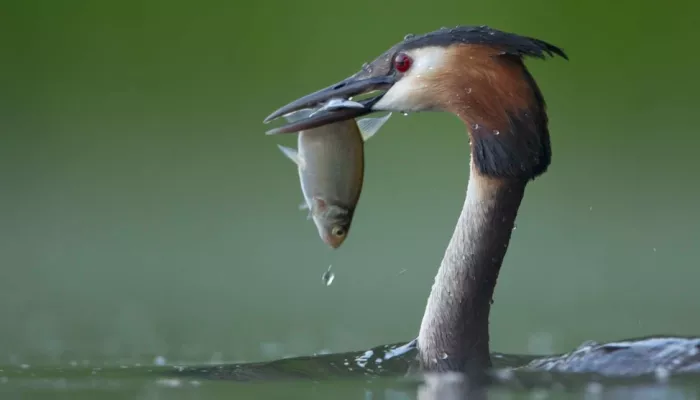About
Grebes are diving waterbirds, feeding on small fish and aquatic invertebrates. A little bit larger than a coot, great crested grebes nest on floating platforms made up of waterweed. They can be found on lakes and reservoirs everywhere.
How to identify
The largest and most often seen grebe, the great crested grebe has an impressive plume on its head and orange ruff around its neck during the breeding season. It has white cheeks, a dark cap, a white neck and a dark body.
Did you know?
Never mind Strictly Come Dancing, to see some fancy footwork head down to your local lake or reservoir to watch the wild dance of great crested grebes. Their early spring courtship includes 'mewing' and calling, synchronised swimming, preening and fanning out their feathery ruffs.

